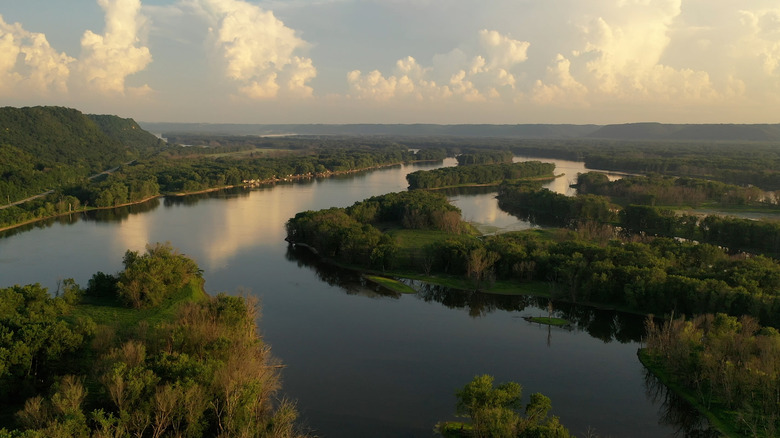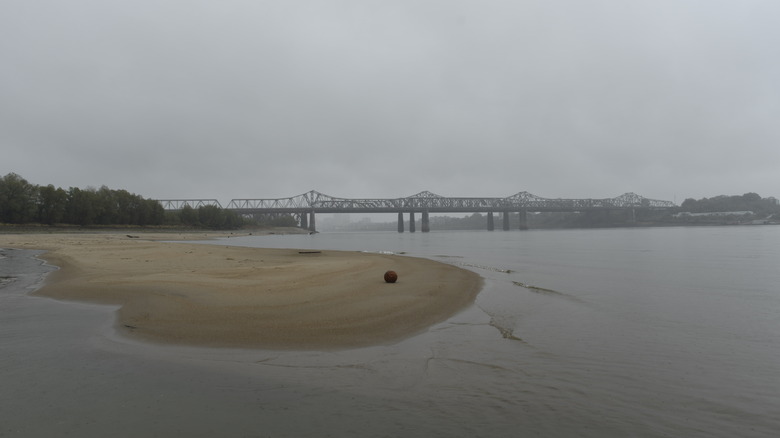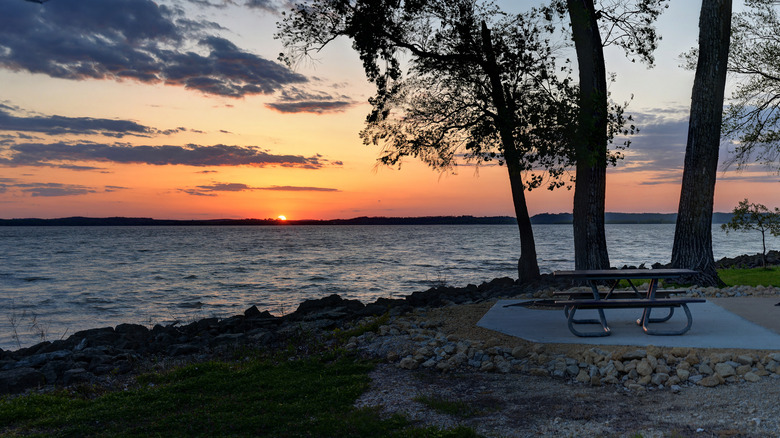What Causes The Stunning Mississippi River Rip?
The rivers of the world are fascinating case studies. The mighty Nile and Amazon rivers, for example, continue to spark debate over which is the longest in the world. Guinness World Records gives that award to the Nile, declaring the African waterway to be 6,695 kilometers (around 4,160 miles) long. In June 2007, however, per National Geographic, a two-week survey of the Amazon determined that its origins were a little different than believed, putting it at a total length of 6,800 kilometers (4,225 miles).
As of the time of writing, the Nile continues to hold the consensus for the world's longest river, but we can all agree that both are vast and stunning forces of nature. Still, rivers don't need to be show-offs in contention for global records to be unique and impressive.
The Mississippi River has long been teaching people around the world how many of the letters I, S, and P are in its name. That's just the beginning of what's so intriguing about it, though. Here's how the famed Mississippi River rip came into being.
Polluted water is largely the cause
The Mississippi River is quite the record-breaker itself. According to Britannica, it's one of North America's longest rivers, stretching for 3,766 kilometers (2,340 miles). From Minnesota's Lake Itasca to the Gulf of Mexico, it runs through the nation and the nation's history.
What's even more interesting than this, though, is what happens at the river's delta. As the United States Environmental Protection Agency reports, a total of 31 different states' water drains into the Mississippi along its long and meandering route. Among all this water, naturally, is a wide range of nutrients, chemicals, and other elements that are flushed out at the other end.
Over time, we've built on and around the river to suit our own ends (as is humanity's wont, of course), which has further exacerbated this. The result has been that the Gulf of Mexico dead zone (an area with less oxygen in the water due to pollution and other factors) is one of the planet's very biggest, according to the National Ocean Service.
This, then, is the Mississippi River rip: an intriguing phenomenon in which, per Jacksonville, oncoming water from the river and the Gulf of Mexico's water look very different and fail to mix together.
Other dead zones around the world
NASA states that the sediment-laden water from the river creates an incredible contrast with the water it's meeting, making for a beautiful-looking scene. Sadly, though, as noted, it's not a sign of good natural health. Quite the opposite, in fact.
According to The Nature Conservancy, this river water, with its range of chemicals and runoffs, has an enormous negative effect when it arrives at its final destination. Nitrogen- and phosphorous-heavy water, according to the outlet, encourages plant growth. The perfect conditions for algae, but the huge quantities of it that spring up there drastically cut the oxygen in the water, hence the dead zone.
Needless to say, this is devastating for the ocean-dwelling species in the region, and solutions to mitigate the effects of dead zones are paramount. In July 2022, Earth.org reported that 233 areas around the planet were at risk of becoming dead zones. Curiously, they do also exist in nature: the Black Sea boasts a naturally-occurring dead zone, and the biggest anywhere.


